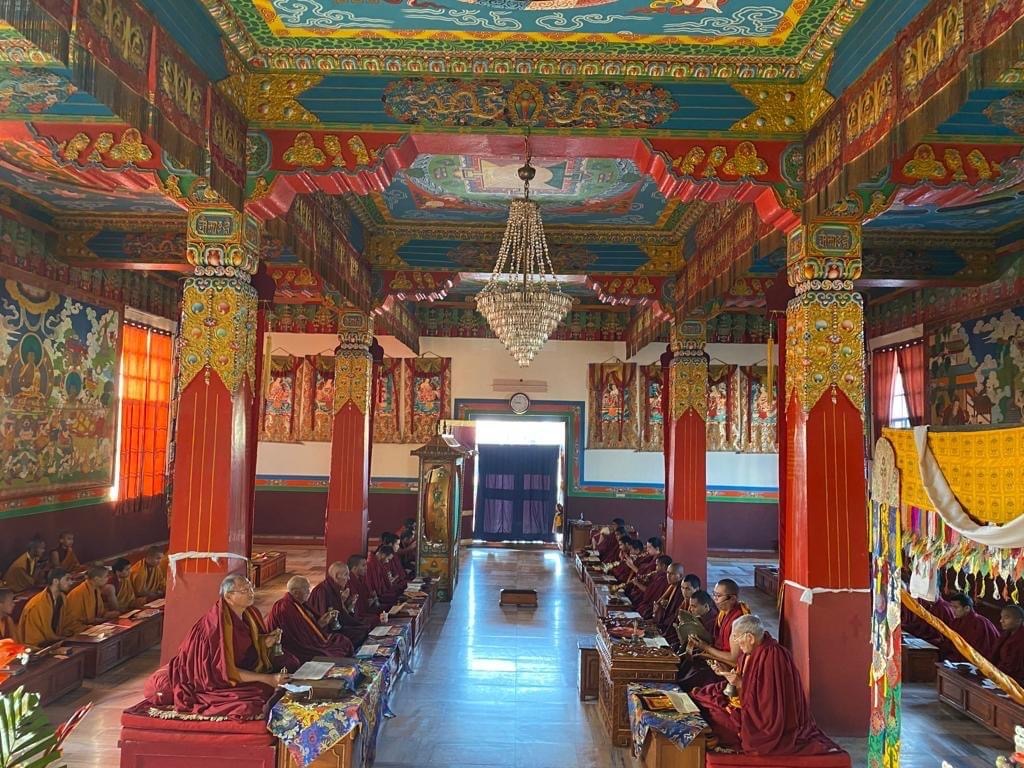


Approximately 200 monks from Tibet, Mongolia, Nepal and Ladakh, India, live at the Drikung Kagyu Jangchubling Monastery. The young monks undergo monastic education. Activities for these monks start at 5:00 AM. From 6:00 to 7:00 AM they attend the Morning Prayer Session with the younger monks from the Jangchubling Junior School.
They have classes from 8.30 AM to 5:00 PM with a lunch breake from 12:00 noon to 2:00 PM. The subjects they study are Buddhist teachings, chanting, gur (religious songs), rituals, religious music instruments, torma making (offerings), sand mandalas and building of chörten (stupas).
From 5:00 to 6:00 PM they have time for recreation. Most of the monks like to play cricket and football. They enjoy their sports and many of the monks watch and cheer the teams.
Dinner is served at 6:00 PM and there are also fifteen minute tea breaks in the mornings and afternoons.
The Evening Prayers for all of the monks at the main temple of Jangchubling Monastery follow from 6:30 to 7:30 PM. 7:30 to 9:00 PM is their study period and 10.00 PM the lights are turned out for a good night’s sleep.
Sunday mornings there is class and the afternoons are set aside for cleaning inside and outside of the monastery. On Mondays it is a holiday and the older monks go to town or to Sahastradhara to bathe in the river or to wash their blankets in summer.
There is a longer summer holiday for two months and most of the monks who have relatives or homes elsewhere take leave to join their family and friends. Generally about 50 to 60 monks remain at Jangchubling.
In November H. H. Kyabgön Chetsang Rinpoche gives Teachings that last for several days. This teaching is called the Annual Winter Teachings, a teaching held in Tibet in the past. The monks of Jangchubling participate together with the students of Kagyu College, the nuns of Samtenling and many outside participants. Occasionally the Senior Abbot of the Drikung Kagyu, Khenchen Konchog Gyaltsen and Senior Teachers give teachings to all the monks and nuns as well as lay persons at Jangchubling.

